Homestead animal series, #2 Poulty
Hello Homesteaders, gardeners and crazy chicken people,
Today is the second part of the homestead animal series. This time we’ll be looking at our chickens. At Warfsterveld homestead we have egg layers, meat birds and some bantam pest control bird which you might consider as pets.
We have dual purpose chickens on our property, not because we were looking for that but because I couldn’t convince myself that a fast growing bird was healthy for me to eat. Even with chickens on pasture (which we do) you need to consider the minerals and vitamins such a bird actually need for it’s growth and how much would be left over in the meat itself.
I observed a couple things when I kept several breeds of chickens on our property, with our setup and I found other birds then your typical meat breed looking more healthy (with full acces to a mineral bar). This could be influenced by a ton of things like the weather so it’s not a really reliable study but I’ve done this two times and picked my favorites.
We have two main breeds on which we focus which are the Jersey Giant (like our girl Blue the second shown here, queen of the flock)
And Sussex
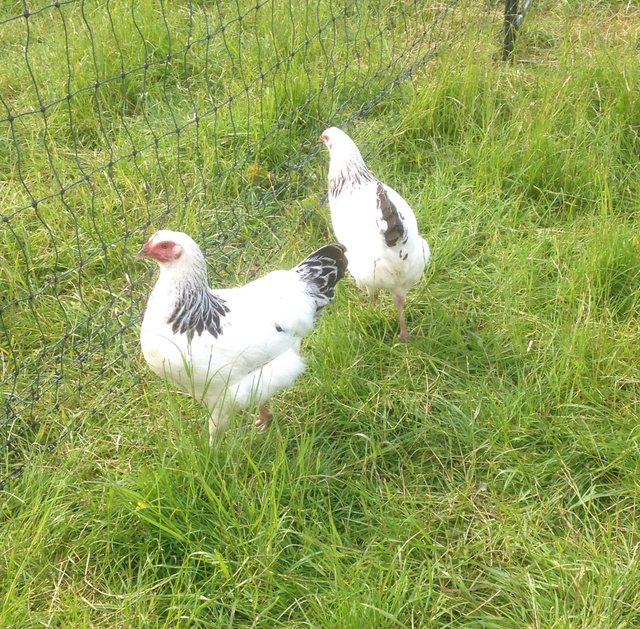
We also crossbreed the two because I aim for a Jersey-like chicken with a little less food consumption. Since the Sussex use less feed, forage a bit more and grow faster they might be a great match for the Jersey’s.
The Jersey (and their chicks) are more hardy for cold wet conditions and I find them in the rain when the others are in. They are also the most hardy chicks I ever had, partly because they tend to have a nice thick set of fluff and feathers. They are very friendly large chickens, great mothers and do not fly because they are heavy birds. In a emergency situation they can fly but most just run for cover, they won’t jump the fence. They forage a great deal and will even grab mice or small rats. I have a line of grey coloured bird which may or may not possess a blue shine on their feathers. I try to bring out that colour because it’s so stunning! Some have it, some don’t.
At the moment the layers are mulching some tall grass with their eggmobile out on pasture. Oh we also have one New Hampshire chicken and two Muscovy ducks in with the layers.
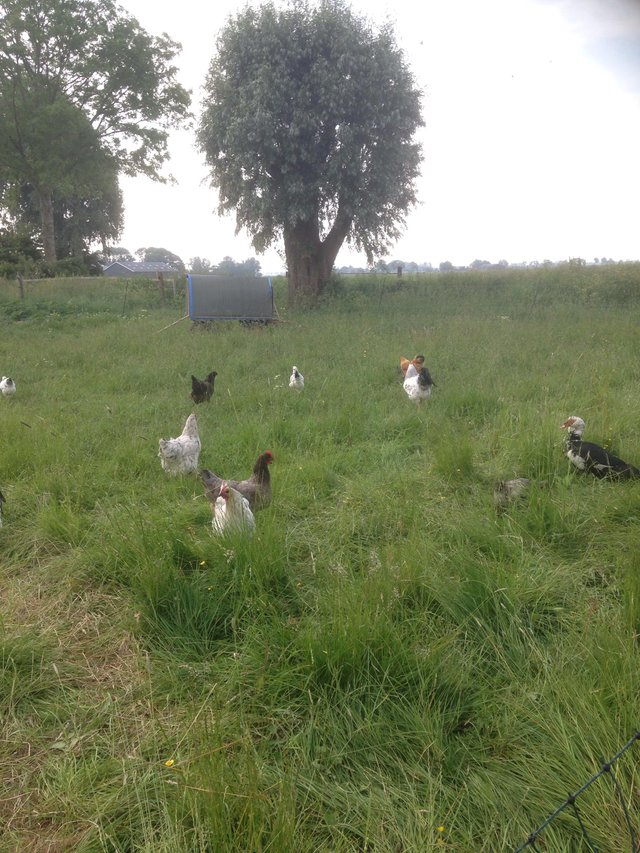
The last of the meatbirds we have are in their chicken tractor and almost ready to be processed. They are this year’s Sussex roosters. The Jersey Sussex crosses grew much faster than the pure bred chickens so they already went to freezer camp. This is a very basic design, just a wooden rectangle with pvc pipes, chickenwire and a tarp. It has failed us however because we are near the coast and our terrible winds swoop the thing away. The structure ain't heavy enough so next time it's an all-wood tractor again.
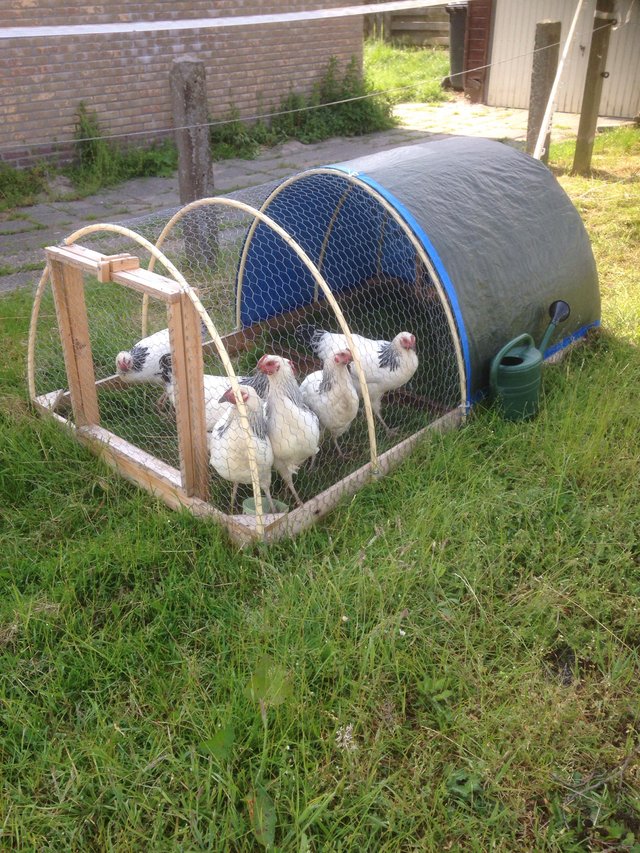
The last little group are the freerange chickens which consist of one japanese bantam or chabo, one serama-chabo cross and three young araucana’s. They don’t disturb the plants too much so they can go wherever they want.
Our rooster Mr. Sparkles and his daughter Zojja will keep the girls on our property and bring them in at night.
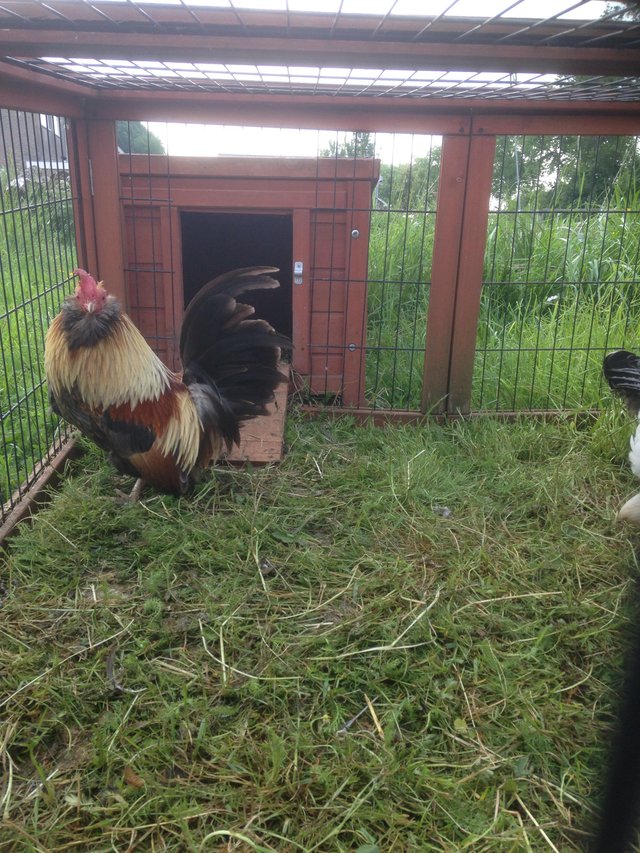
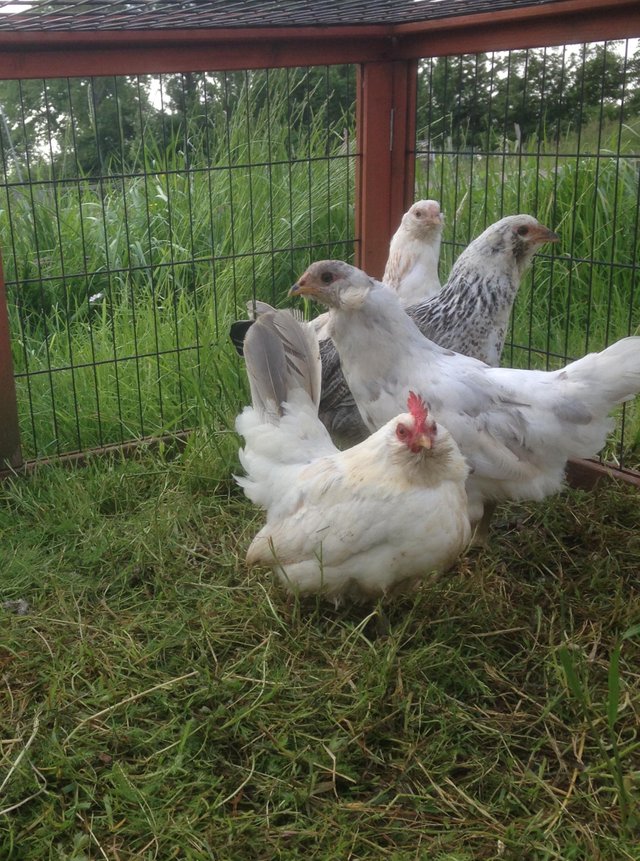
Thanks you for reading, next up are goats!
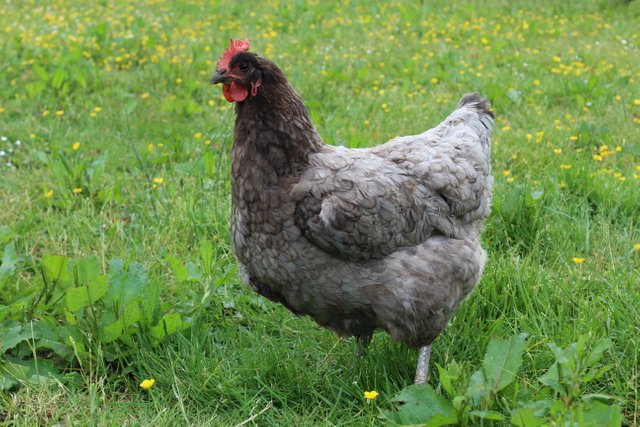
We tried Jersey Giants one year. We had a lot of genetic problems (cross bill, leg problems) and they took 24 weeks to mature, so the feed/meat ratio was very poor.
We tried Sussex one year, but they didn't lay as well and the meat conversion wasn't as good as others we've tried. Also the white coloring made them a predator magnet.
We also raise dual purpose birds for eggs and meat. In fact today, we are putting the 90 chicks out on pasture as they are 5 weeks and feathered out. This year they are Barred Rocks and Australorps.
We very briefly considered using PVC for the hoops to our pasture coop, but as we are a wind tunnel here, it was quickly discarded.
Genetics is certainly something to think about. I have other breeds on my wishlist but they are just not available or there isn't much genetic diversity. I had a lot of issues with Amrock in terms of genetic problems so decided to give up on them.
Luckily our current Jersey flock has produced many succesful generations but only the oldest hens great-grandfather had "true" American blood so to speak. The other lines were bred here in Europe.
As far as predators go we have many birds of prey. The chickens must have the instinct to run for cover, if they don't then they won't have a place here. Harsh but it's as simple as that. I make no exception for bantams but they usually hang out near our pile of logs so they have their regular hiding spot. Some of the Hampshires had zero notion of danger and I'm surprised non of them got eaten. They went on to a new home.
Other predators involve mostly rats and foxes but they are sensitive to me moving the chickens around daily. I need to be watchfull when chickens are near tall grass or when I have young chicks. I lost chicks to rats once when I DIDN'T move them, never ever will I forget. Moving is the key.
We lost 7 chicks to rats a few years back, and they had just moved into the coop that day. Our current problems are the ever present aerial predators (LOTS of these) and rats and foxes. There are other predators but these are the top of the list.